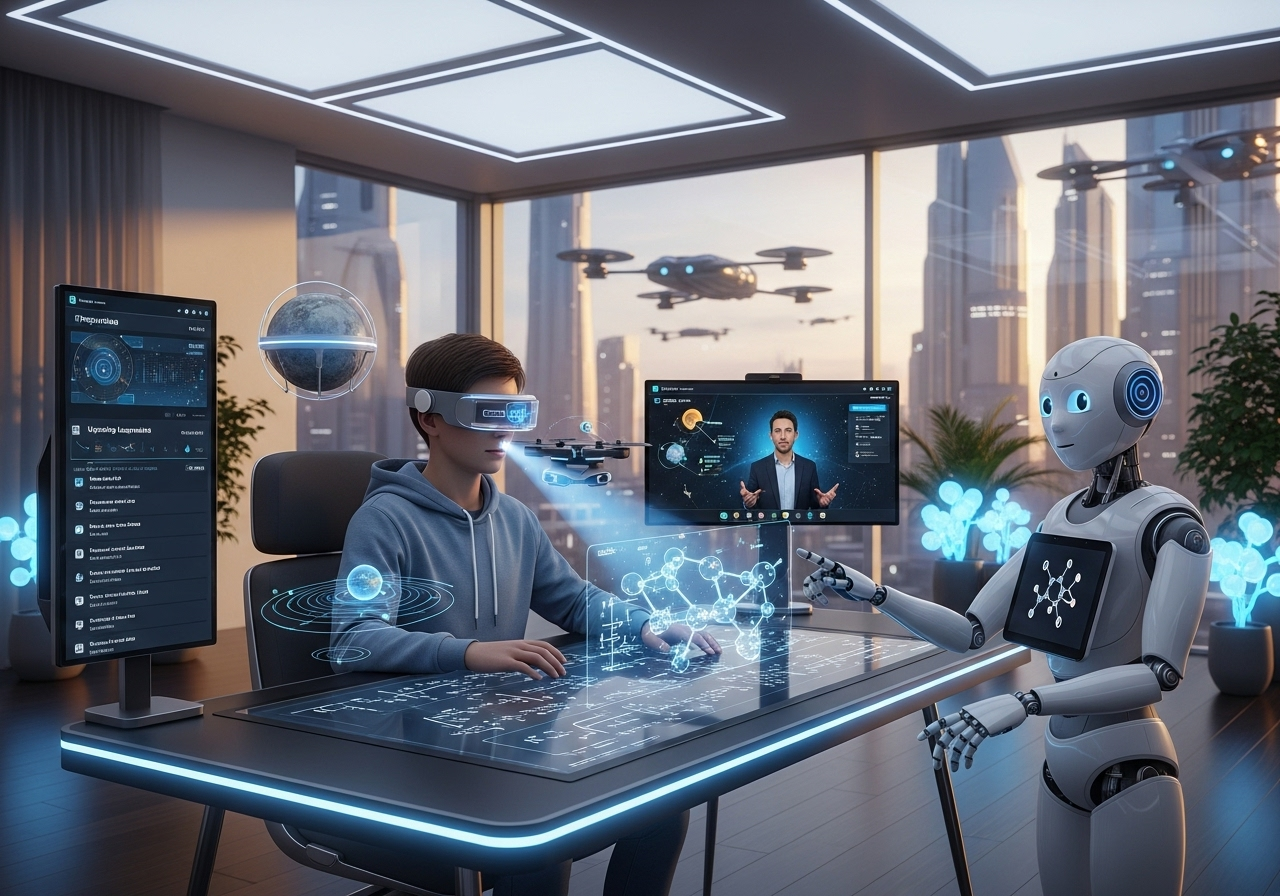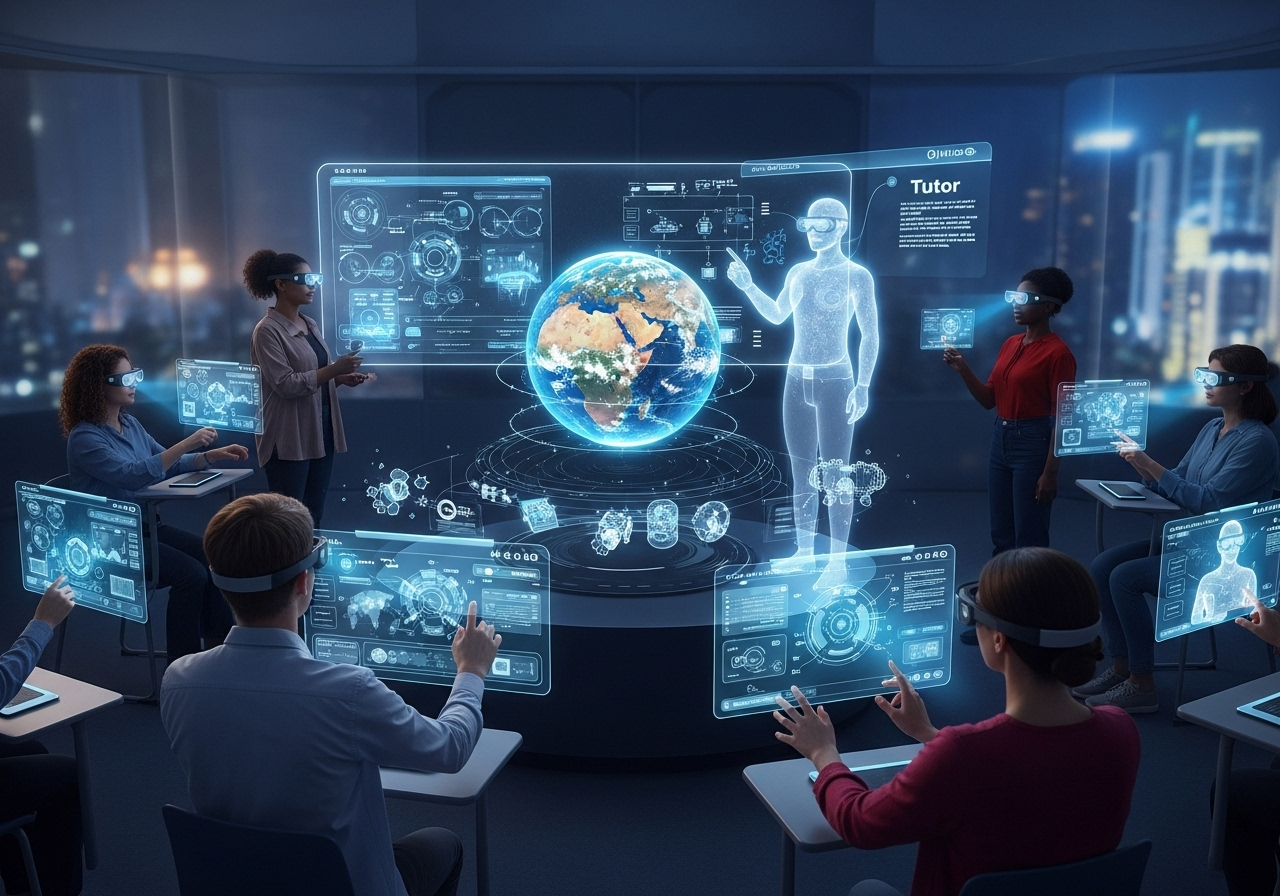The Future of Education: EdTech Trends to Watch in 2026
Kailey Watts
2025-10-13
6 min read

Education stands at the threshold of a remarkable transformation. As we navigate through 2026, the landscape of learning continues to evolve at an unprecedented pace, driven by technological innovations that were once relegated to science fiction. The convergence of artificial intelligence, immersive technologies, and data analytics is reshaping how students learn, teachers instruct, and institutions operate. Understanding these emerging trends is crucial for educators, administrators, and learners who want to stay ahead of the curve in this rapidly changing educational ecosystem.
Artificial Intelligence Becomes the Ultimate Learning Companion
Artificial intelligence has moved beyond simple automation to become a sophisticated learning partner that adapts to each student's unique needs. Modern AI-powered educational platforms can analyze learning patterns in real-time, identifying knowledge gaps and adjusting content delivery accordingly. These systems don't just track what students get wrong; they understand how students think, learning from their problem-solving approaches and cognitive patterns. The most advanced AI tutoring systems now provide explanations tailored to individual learning styles. A visual learner might receive diagram-based explanations for complex concepts, while an auditory learner gets the same information through interactive discussions or audio content. This level of personalization was impossible with traditional one-size-fits-all approaches and represents a fundamental shift toward truly individualized education. Machine learning algorithms are also revolutionizing assessment and feedback. Instead of waiting for end-of-term exams, AI systems provide continuous assessment that measures understanding in real-time. This immediate feedback loop allows students to address misconceptions before they become deeply ingrained, leading to more effective learning outcomes and reduced academic frustration.
Virtual and Augmented Reality Transform Learning Spaces
Immersive technologies are breaking down the walls of traditional classrooms, creating learning environments that were previously impossible. Virtual reality platforms now allow students to walk through ancient Rome, manipulate molecular structures with their hands, or practice surgical procedures without risk. These experiences don't just supplement traditional learning; they create entirely new ways to understand complex subjects. Augmented reality is making classroom content interactive and engaging. Students can point their devices at textbook pages to see 3D models come to life, or use AR apps to solve mathematical equations that appear to float in mid-air. This technology bridges the gap between digital content and physical learning spaces, creating hybrid environments that enhance rather than replace traditional instruction. The social aspect of VR learning is particularly compelling. Students from different continents can collaborate on projects in shared virtual spaces, breaking down geographical barriers and creating global classrooms. This connectivity fosters cultural exchange and collaborative problem-solving skills that are essential for success in an interconnected world.
Personalized Learning Platforms Reach New Sophistication
Educational platforms have evolved far beyond simple course delivery systems to become comprehensive learning ecosystems. These platforms use sophisticated algorithms to create learning paths that adapt not just to academic performance, but to individual preferences, schedules, and life circumstances. Students who learn better in short bursts receive content in micro-learning modules, while those who prefer deep dives get extended learning sessions. The integration of biometric data is adding another layer of personalization. Some platforms now monitor stress levels, attention patterns, and cognitive load to optimize learning sessions. If a student shows signs of cognitive overload, the system might suggest a break or switch to a different type of activity. This physiological awareness ensures that learning happens when students are in optimal states for retention and comprehension. Adaptive learning technologies are also becoming more sophisticated in their approach to skill building. Instead of linear progression through predetermined curricula, these systems create dynamic learning networks where students can explore interconnected concepts based on their interests and aptitudes. This approach mirrors how knowledge actually works in the real world, where understanding comes from making connections between seemingly disparate ideas.

Data Analytics Drive Educational Decision Making
The wealth of data generated by modern educational technologies is being harnessed to make more informed decisions about curriculum design, resource allocation, and student support. Learning analytics platforms can identify at-risk students weeks before traditional methods would flag concerns, enabling early intervention that can prevent academic failure. Predictive analytics are helping institutions optimize their programs and resources. By analyzing patterns in student engagement, performance, and career outcomes, schools can identify which teaching methods are most effective for different types of learners. This evidence-based approach to education is replacing intuition and tradition with data-driven insights that improve outcomes for all students. The granular data available through digital learning platforms also enables more precise measurement of learning outcomes. Instead of relying solely on test scores, educators can track engagement levels, time spent on tasks, collaboration patterns, and problem-solving approaches. This comprehensive view of student progress provides a more accurate picture of learning and development.
Microlearning and Flexible Scheduling Gain Momentum
The traditional semester system is giving way to more flexible learning arrangements that accommodate diverse lifestyles and learning preferences. Microlearning platforms break complex subjects into bite-sized modules that can be completed in minutes rather than hours, making education more accessible to busy professionals and non-traditional students. Subscription-based learning models are democratizing access to high-quality education. Students can access world-class instruction and resources for a fraction of the cost of traditional programs, removing financial barriers that have historically limited educational opportunities. This accessibility is particularly important for adult learners who need to balance education with work and family responsibilities. Just-in-time learning is becoming increasingly popular as professionals need to acquire new skills rapidly in response to changing job requirements. Instead of completing lengthy degree programs, learners can access specific skills training exactly when they need it, making education more relevant and immediately applicable to real-world challenges.
Preparing for the Educational Future
As these trends continue to evolve, the most successful educational institutions will be those that embrace change while maintaining focus on fundamental learning principles. Technology should enhance human connection and critical thinking rather than replace them. The future of education lies not in choosing between traditional and digital approaches, but in thoughtfully integrating both to create learning experiences that are more engaging, effective, and accessible than ever before. The educational landscape of 2026 offers unprecedented opportunities for personalized, engaging, and effective learning. By understanding and adapting to these trends, educators and learners can harness the power of technology to create educational experiences that truly prepare students for success in an rapidly evolving world.



